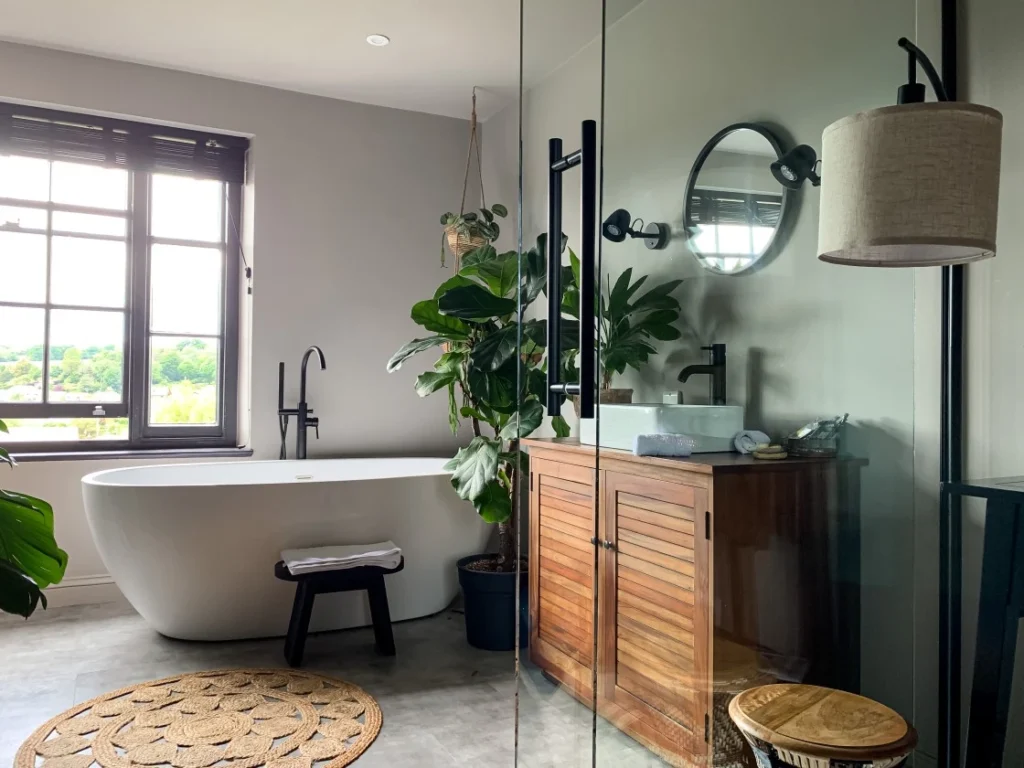A bathroom renovation is one of the most impactful ways to enhance a home’s comfort and functionality. Whether updating outdated fixtures, improving storage, or creating a spa-like retreat, remodeling this space requires careful budgeting. Many homeowners asking "how much to renovate a bathroom" will discover that costs vary widely depending on size, materials, labor, and the extent of remodeling. Below, we explore the factors influencing costs, break down expenses, and provide insights to help homeowners plan their renovation efficiently.
Factors That Affect Bathroom Renovation Costs
The cost of a bathroom renovation depends on several key factors ranging from the size of the space to the materials chosen. Understanding these elements helps in making informed financial decisions.
1. Bathroom Size and Layout
- A small half-bath costs significantly less to renovate than a full or master bathroom.
- Compact layouts limit labor and material expenses, whereas larger layouts may require additional plumbing and electrical work.
2. Extent of Renovation (Minor vs. Major Overhaul)
- A cosmetic update, such as repainting walls, replacing faucets, and installing a new vanity, costs considerably less than fully gutting the bathroom and starting from scratch.
- A complete overhaul includes structural changes, moving plumbing, and upgrading flooring, which increases expenses.
3. Material Selection and Quality
- Budget-friendly materials like ceramic tiles and fiberglass bathtubs reduce costs, while high-end options like marble countertops or custom-built vanities significantly raise expenses.
- Flooring, walls, countertops, and fixtures all play into the budget, so material choices should align with financial constraints.
4. Labor and Contractor Fees
- Hiring professionals for electrical and plumbing work is necessary for safety and adherence to building codes.
- Labor costs vary by location, with higher fees in metropolitan areas.
- DIY efforts can save money, but without the right expertise, mistakes may lead to costly repairs.
5. Permits and Regulatory Requirements
- Major renovations often require permits, which add to the overall cost.
- Local regulations influence pricing, especially when structural changes are involved.
By considering these factors, homeowners can create realistic budgets and prevent unexpected financial strain.
Average Cost of a Bathroom Renovation
The cost to renovate a bathroom varies based on scope and geographic location. A detailed breakdown provides a clearer picture:
1. Basic Renovation ($2,500 – $10,000)
- Replacing fixtures (sink, toilet, vanity)
- Updating lighting
- Refinishing bathtub instead of replacing
- Painting walls and cabinets
- Installing vinyl or ceramic floor tiles
2. Mid-Range Remodel ($10,000 – $25,000)
- New bathtub or shower enclosure
- Upgraded countertops (granite, quartz)
- Custom or semi-custom cabinetry
- High-end lighting updates
- Additional storage solutions
- Tile flooring upgrades
3. High-End or Luxury Remodel ($25,000 – $50,000+)
- Expansion of bathroom space
- Custom walk-in showers with high-end fixtures
- Heated flooring and towel racks
- Premium materials like marble and natural stone
- Smart technology integrations (touchless faucets, digital showers)
- Freestanding tubs and luxury vanities
Luxury renovations often involve extensive custom work, which drives up costs significantly.
Cost Breakdown by Bathroom Components
Each component of a bathroom remodel contributes to the final cost. Understanding these individual expenses helps prioritize spending.
1. Plumbing and Fixtures
- Toilet replacement: $150 – $800
- Sink and faucet: $200 – $1,500
- Bathtub installation: $600 – $4,500
- Walk-in shower installation: $3,000 – $10,000
2. Flooring and Walls
- Tile flooring: $5 – $25 per square foot
- Vinyl flooring: $2 – $8 per square foot
- Shower wall tiles: $7 – $50 per square foot
- Paint and wall treatments: $200 – $2,000
3. Cabinets and Countertops
- Prefabricated vanity: $500 – $3,000
- Custom-built vanity: $2,500 – $10,000
- Countertops (granite, quartz, marble): $50 – $200 per square foot
4. Lighting and Electrical Work
- Standard lighting fixtures: $100 – $1,000
- LED mirrors or sconces: $200 – $2,500
- Electrical upgrades (wiring, outlets): $500 – $3,000
Smart design choices can maximize impact without exceeding budget constraints.
Budgeting Tips for Bathroom Renovations
A successful renovation requires thoughtful planning and cost-conscious decisions. Here are some expert tips:
-
Set a Realistic Budget
Determine priorities and allocate funds appropriately to avoid overspending. -
Plan for Unexpected Costs
Additional expenses typically arise due to plumbing issues or material price fluctuations. Keeping an extra 10-20% in reserve prevents financial surprises. -
Choose Cost-Effective Materials
Alternatives such as laminate countertops over natural stone or ceramic flooring instead of porcelain maintain style without inflating costs.
-
Reuse or Repurpose When Possible
Instead of buying new cabinets, refinishing or repainting existing ones creates an updated look while cutting costs. -
Consider Partial DIY Projects
Painting walls, installing simple fixtures, or doing minor demolition reduces labor expenses. -
Shop Sales and Clearance Items
Seasonal sales and clearance events offer discounted prices on quality materials and fixtures.
Being strategic with spending can achieve stylish, functional results at a fraction of the price.
Maximizing Space and Aesthetics on a Budget
Renovating a bathroom isn't just about costs—it’s about creating a functional and beautiful space. Here are some ideas to enhance both aesthetics and utility:
- Light-colored tiles and walls make small bathrooms feel more spacious.
- Open shelving provides storage without overwhelming the space.
- Wall-mounted vanities free up floor area, creating a larger appearance.
- Mirrors with integrated lighting enhance both function and style.
- Coordinating hardware (faucets, towel bars, cabinet pulls) provides a polished, cohesive look.
For those exploring broader interior trends, microcement in modern interiors is a stylish material choice for contemporary bathroom designs.
Should You Hire a Contractor or DIY?
Determining whether to hire a contractor or take the DIY route depends on the project’s complexity:
-
Hire a Contractor If:
- Plumbing or electrical work is involved.
- Structural changes or expansions are necessary.
- Project requires city permits and adherence to building codes.
-
Do It Yourself If:
- Painting, cosmetic upgrades, and simple installations are the primary tasks.
- You have prior experience with minor plumbing or carpentry work.
- The renovation is purely aesthetic without structural modifications.
Combining professional expertise with DIY efforts can balance costs and achieve high-quality results.
Final Thoughts
Asking "how much to renovate a bathroom" leads to a range of possibilities depending on scope, materials, and labor requirements. Whether planning a small refresh or a full-scale transformation, setting a clear budget and prioritizing expenses ensures a successful renovation. Thoughtful design choices, strategic spending, and a mix of professional and DIY work can result in stunning, functional spaces without exceeding financial limits.



